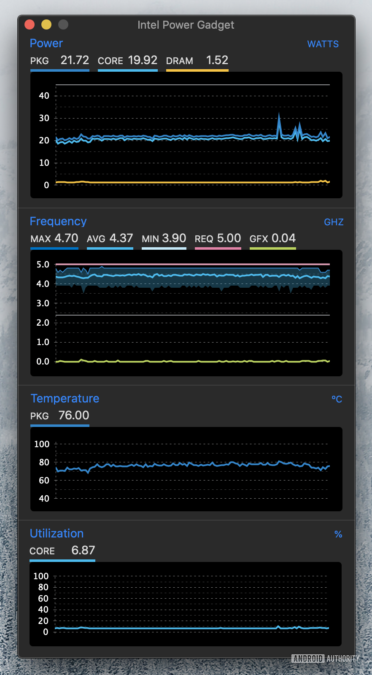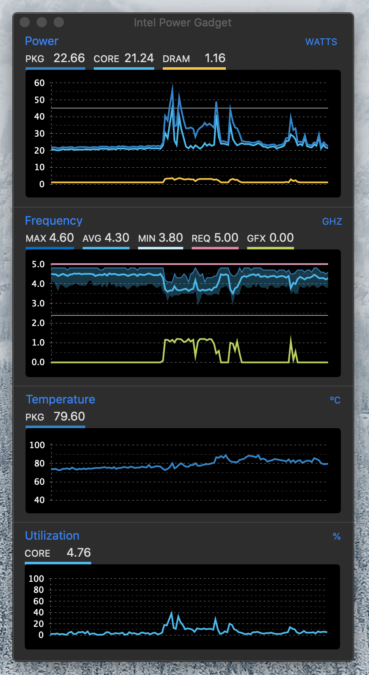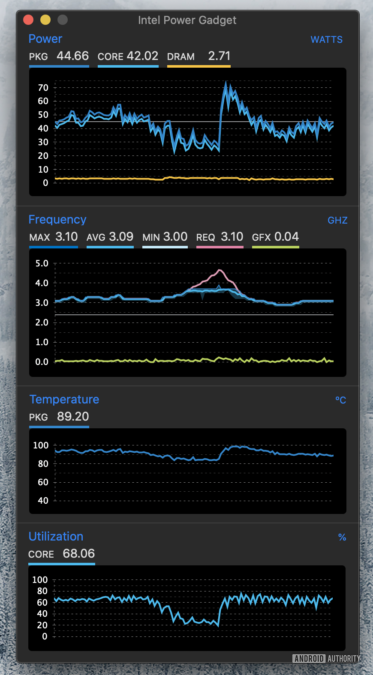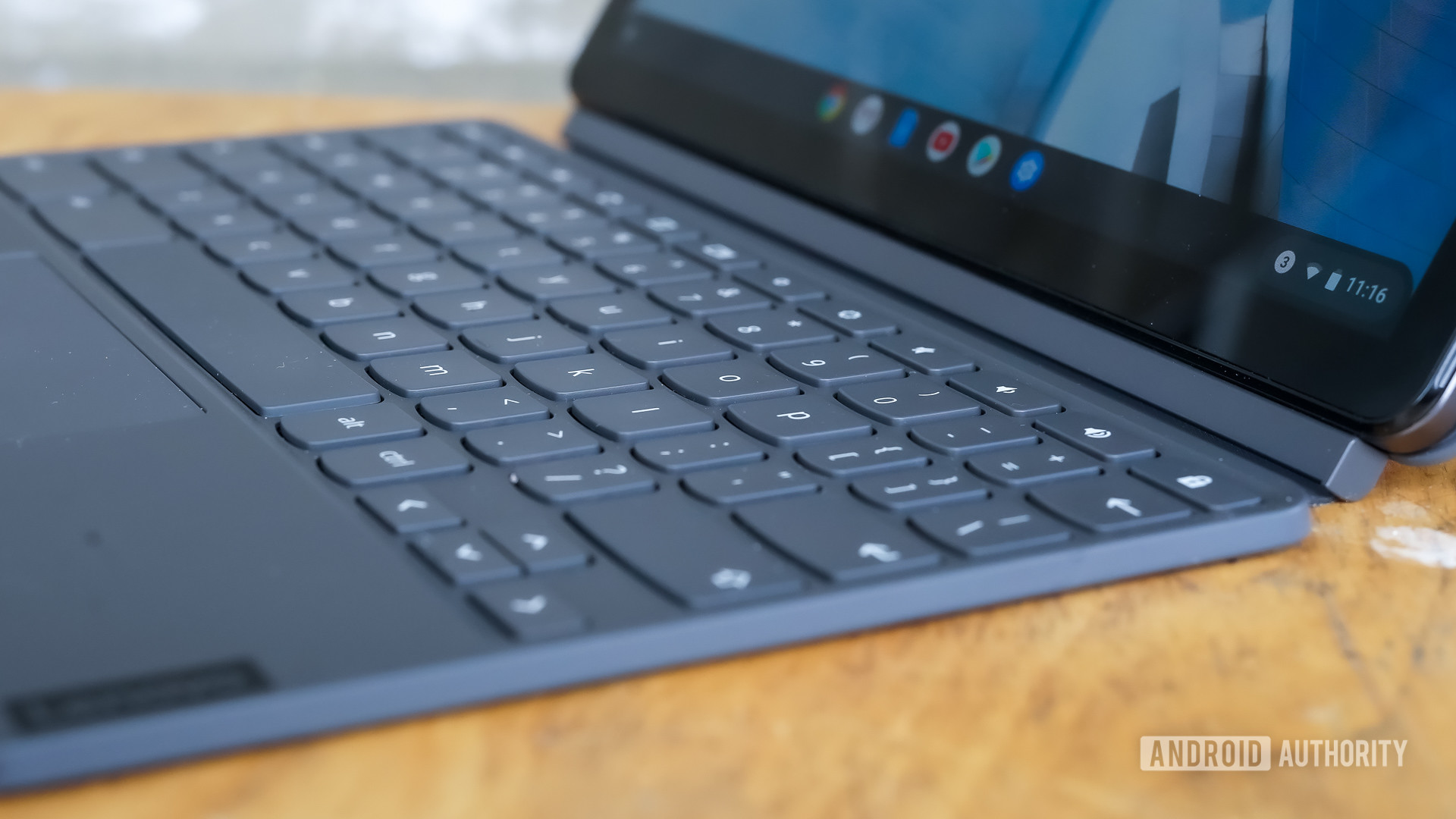Apple MacBook Pro (16-inch) long-term review: A true desktop replacement
Apple’s 16-inch MacBook Pro is not for the faint-hearted. It’s big, powerful, and incredibly expensive. The company initially introduced it in November of 2019 as a replacement for the outgoing 15-inch model, which had its fair share of hardware issues. The 16-inch model received a lot of praise upon release, but what’s it like to live with long term? And, more importantly, is it worth buying halfway through 2020?
In Android Authority’s Apple’s 16-inch MacBook Pro review, you’re about to find out.
Who is the 16-inch MacBook Pro for?
There’s a reason Apple calls this machine a “Pro.” From the performance, to the display, to the pricing, it caters to creative professionals, whether they’re toiling away at the office or on the go. This notebook is made to be someone’s workhorse — not a Netflix and YouTube machine.
With this machine, you’re paying for desktop-level performance in a portable package. This convenience is important to people like me who can have easy access to their work computer no matter where they are. The fact that you can get rid of a desktop computer altogether and use it as your sole machine is why the 16-inch MacBook Pro costs as much as it does.
16-inch MacBook Pro: The hardware

This is not a small laptop, so calling it a thin and light is not accurate. That said, at 357.9 x 245.9 x 16.2mm and 2kg, it’s not a behemoth either. I found it struck the right balance between a portability and a desktop features.
The 16-inch 60Hz IPS display comes in at 3,072 x 1,920 pixels with an aspect ratio of 16:10. The panel covers the P3 color gamut and has a 500nit peak brightness. Thanks to the excellent colors, great brightness, and solid viewing angles, it’s the best display over 12in. that I own. The bezels surrounding the screen are thin enough to not be distracting, though they are not the thinnest on the market.
This is arguably the most ideal form factor for video editing.
The omission of ports such as an SD card reader, HDMI, and ethernet is likely going to miff those who rely on legacy connectors. All four Thunderbolt 3 USB-C ports are capable of 40Gbps throughput and charging the MacBook at full speed. At least Apple kept the 3.5mm headphone port. Remember that one? It’s not ideal to be left with just a handful of ports, but I got by with a single dongle to suit all of my needs. The ports’ versatility helps here a lot.


Apple’s reputation for great build quality is evident in this notebook. There’s hardly any flex to the keyboard deck at all; the display hinge is as satisfying as it is stable; the keyboard and trackpad don’t wobble about; and there’s a real sense of tightness in the chassis.
How about the keyboard?

Apple’s track record for keyboards has been a bit iffy in recent years. Its butterfly keyboards were reviled for being unreliable an uncomfortable. The 16-inch Pro brought back the old scissor-switch keyboard and it was refreshing to use. Having a proper keyboard was a breath of fresh air. The extra travel results in more long-term comfort. Between the backlight, the spacing, and the tactile feel, I have nothing bad to say about Apple’s new keyboard. It was flawless over the two months I used it, with no sticky or missed keystrokes.
The TouchID fingerprint scanner at the top right corner of the keyboard was consistently quick and accurate.
The touch bar, on the other hand, was a bit hit and miss. I’d have much preferred a row of old-fashioned physical buttons for adjusting brightness and volume. I basically never used the touch bar and I know the same goes for others who have touch bar-equipped MacBooks. Still, one key at a time, eh? Thanks for the escape key, Apple!

The massive trackpad was a blast to use. The touch bar, on the other hand, was a bit hit or miss.
The massive trackpad, which spans just over 18cm corner to corner, was a blast to use and was as smooth as you would expect from a class-leader. Apple’s haptics are unmatched, and the tracking was accurate. It doesn’t quite match the precision of a good quality mouse for things like video editing or gaming, but for everything else, it’s great.
The stereo speakers, which sit either side of the keyboard, sound incredible. You’ll likely be pleasantly surprised at just how much depth is present in your music. I could happily listen to an entire album on this laptop.
Continue reading: The best Android keyboards
How are the thermals and noise?



That thin profile isn’t always a positive, however. While thermal issues didn’t impact performance, the sheer amount of heat produced when performing any power-intensive task was unnerving. This means the fans spin really fast to push air through the heatsinks to cool the components inside. Even with the fans on full, the machine still peaked at 95C when under heavy load, settling at around 85C.
This computer gets hot and loud.
The result? A laptop that sounds like it’s about to take off, and also a very toasty lap if you’ve not got it on a desk. While this can be circumvented to some degree with a good pair of noise-canceling headphones, there is a bigger concern: longevity. Computer components that spend a lot of time at high temperatures usually don’t last as long as those that are cooled properly.
With this in mind, I’m really putting my faith in Apple to have accounted for the thermal limitations in the fan profiles and thermal throttling techniques to keep the components lasting a long time. So far so good, but it’s only been ten weeks and any potential heat-related issues wouldn’t have surfaced so early on.
What’s “Pro” about it?
Competing Desktop PC
- Intel i7 8700K 6-core
- 32GB 3000MHz DDR4
- EVGA GTX 1080Ti 11GB
- 1TB nVME SSD
16-inch MacBook Pro
- Intel i9 9980HK 8-core
- 32GB 2667MHz DDR4
- Radeon Pro 5500M 8GB
- 1TB nVME SSD
As you can see, in CPU-based tests — Geekbench 5 and Cinebench R20 — the MacBook handily beats the desktop despite the radical cooling capability differences. The same can’t be said for tasks that require GPU power, but considering the 1080Ti in the PC is one of the best consumer graphics cards that you can buy, the OpenCL compute results aren’t as far off as I was expecting. If you’re looking for a true desktop replacement, the 16-inch MacBook Pro fits the bill
However, the MacBook Pro isn’t the only desktop-replacement in a relatively thin and light form factor. There is a selection of Windows laptops that compete with the MacBook in this space. As you can see, the performance isn’t all that different in CPU power, as they all have similar or the same chips. There is a small drop in numbers, which is likely due to the thinner chassis of the MacBook impacting thermals. However, while the MacBook has a good Radeon Pro 5500M GPU, it’s not as powerful as the NNidia graphics chips that can be found in its competitors. These are available with Nvidia GTX 1650, and RTX 2060 on the lower end and can be spec’d up even higher.
As for real-world usage, I tested the MacBook Pro by producing videos for Android Authority. I created videos with the Adobe Creative Cloud, including Premiere Pro, After Effects, Audition, and Photoshop. I also used Lightroom for photo processing.

The editing process, which includes scrubbing and playback of some fairly heavy Ultra HD 24fps timelines, was smooth across the board. I saw some slowdowns when exporting videos. My desktop machine, for example, exported videos at around half real-time, so a ten-minute video would take about five minutes to render. As for the MacBook Pro, it took about 25 minutes to export the same ten-minute timeline, while getting a lot hotter and louder.
Battery life from the 100Wh cell has been fantastic. I got a good five hours of writing in Chrome with 15 or more tabs open alongside Slack, Spotify, Discord, and Brave. This is at 50% display brightness, full keyboard brightness, and connected to Wi-Fi. When really pushing the machine to the limit in Premiere Pro, battery life drops to around two hours depending on how heavy the workload was. Keep in mind that this is at full power, the same output that you would get if the thing plugged in.
Continue reading: How to transfer files from your Android phone to your Mac
The laptop charges from 0-100% in just over 90 minutes thanks to the included 96W charging brick. This is pretty quick when you consider how large the battery is and how small the charger is.
What’s it been like to use long term?

Since purchasing the laptop, I’ve made 11 videos with it and spent a lot of time writing. I’ve kept it in a cheap plastic shell case that’s helped protect it from scratches and dents and I’ve stored it in my camera bag. It also fits into a standard backpack. Since it’s not huge, it doesn’t take up heaps of space on a train table, and the same goes for those at coffee shops. I even used this laptop in the passenger seat of a car for a couple of hours.
I have noticed that the display is pretty difficult to clean. With a clean, dry microfiber cloth you really have to go to town on even the lightest of fingerprints to get rid of them. This results in a screen riddled with smeary marks if you’re not super meticulous with your cleaning technique.
Over time I haven’t noticed any performance or battery degradation, though the latter is likely to become an issue in a few months because of just how hot this computer becomes. There haven’t been any crashes or force-restarts which is great to see.
I’ve only had one problem — something that’s been a macOS issue for years — when connecting the laptop to a monitor in clamshell mode: wiggling an external mouse inconsistently wakes the machine. Sometimes it boots up just fine, other times you’re forced to open up the laptop. This is a software problem that needs to be fixed soon.

What I like:
- The performance. It’s great to have the editing power of my main machine on the go.
- The keyboard. It’s consistent, comfortable, and has a consistent backlight.
- The form factor. It fits in my non-pro backpack!
- The screen. It’s sharp, bright, color-accurate, and a great form factor for video editing.
What I dislike:
- The touch bar. It’s not incredibly useful and is unnecessarily complicated.
- The thermals. It gets hot and loud. Not confidence-inspiring.
Should you buy the 16-inch MacBook Pro?

At $2,399 for the base model, and $3,499 as spec’d, the 16-inch MacBook Pro is for those who need their laptop to be productive — it’s a pro machine through and through. I would advise against spending this much money on a computer if all you’re going to use it for is Netflix and word-processing. For that, Apple has some great notebooks that are far cheaper and better suited to those tasks.
If you want something slightly smaller with only a little less power, the 13-inch Pro is a great option. If you want a true thin-and-light machine, the MacBook Air might suit you.
I enjoyed my time with the 16-inch MacBook Pro. It continues to be my work computer for everything from researching to writing to video editing. With fantastic performance, decent battery life, a convenient form factor, and a brilliant screen, there’s not much to dislike. It’s far better than its predecessor, and if you need a workhorse laptop running macOS, look no further.
More posts about Apple
from Android Authority https://ift.tt/3fYrKQQ
















Post a Comment